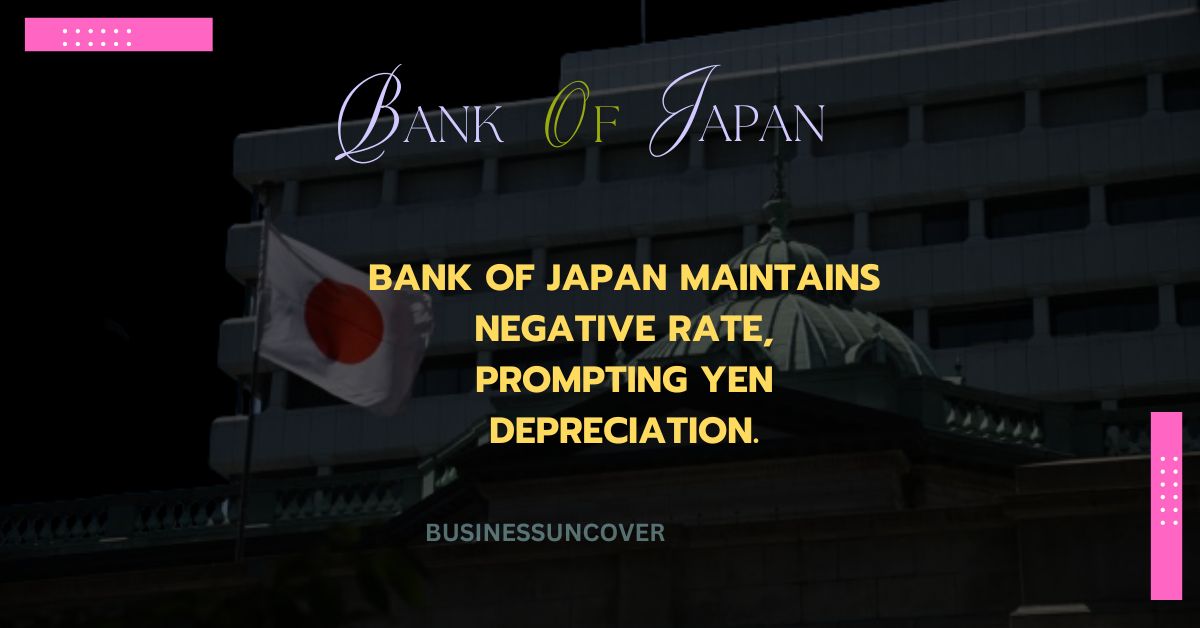The Bank of Japan did not provide any explicit indications regarding when the negative interest rate will stop, which caused the yen to weaken. Instead, it maintained current monetary policy settings and revised its economic forecasts.
At the conclusion of a two-day meeting, the BOJ held onto its -0.1% short-term rate and the yield curve management measures, as stated in a statement released on Tuesday. In a quarterly outlook report, the bank lowered its fiscal year inflation prediction from 2.8% to 2.4%. This suggests that price gains—which have been above its 2% target since April 2022—will keep going above that level for a while.
EveryBOJ watcher surveyed by Bloomberg expected the policy move. This was not the best time to raise interest rates in Japan since 2007. There was a significant earthquake on New Year’s Day, and the ruling party of Prime Minister Fumio Kishida was embroiled in a growing financial controversy. The Federal Reserve and the European Central Bank have hinted at rate reduction later this year; with the hold, the BOJ maintains its position as the world’s leading policy dissenter.
Following the announcement
Following the announcement, the yen experienced a decline in value relative to the dollar, momentarily reaching 148.55 per dollar as market participants adjusted for the possibility of the negative rate persisting for some time.
The consensus among economists that the BOJ would hike rates at some point this year is unlikely to be altered by the stand-pat decision. Indicating that the bank is becoming a little more positive about accomplishing its objective and is still on track for a rate hike, the BOJ stated that the certainty of attaining its price target was continuing to steadily increase.
According to surveyed analysts, April is the best month to remove the negative rate since it will give the central bank time to evaluate the outcomes of the annual salary negotiations. In order to maintain a positive cycle of growing prices and salaries that fuel economic growth, higher raises are considered as essential. According to those with knowledge of the situation prior to the meeting on Tuesday, BOJ officials believed that their price projections, which are at least 2%, are already high enough to support the removal of the negative rate. At this point, they were more concerned with whether the outlook’s level of certainty would rise to a suitable degree.
Reporters will hear from Governor Kazuo Ueda in the afternoon, perhaps starting at 3:30 p.m.
Given the yen’s recent decline, Ueda will likely want to avoid coming out as overly dovish. The yen’s strong value around 150 raises the possibility of more damage to already-weakened consumer spending by maintaining high import costs and increasing cost-push inflationary pressures. As a key price indicator continues to rise above the BOJ’s 2% objective, households facing rising living expenses are already becoming more and more impatient with the protracted enormous monetary easing.







